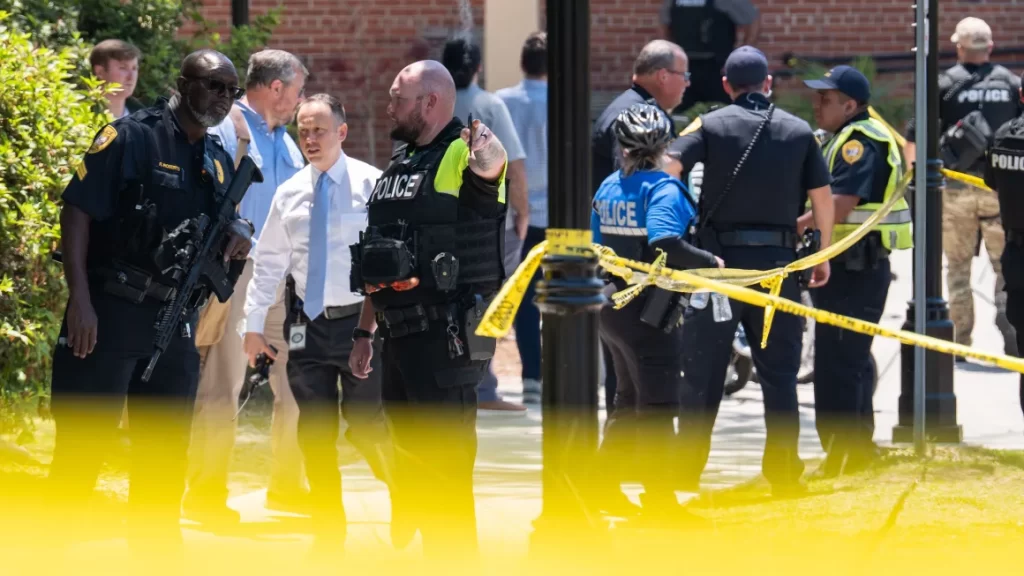Meghan Bannister donned a dress for class, a choice befitting the warm Tallahassee weather. Thursday marked her last day of classes before graduation, but by noon, the Florida State University senior was grappling with the chilling reality of a gunman opening fire on the sprawling campus.
Bannister had practiced active shooter drills since fourth grade and heard harrowing accounts from friends who lived through the 2018 Parkland high school massacre. So, when the shots rang out, she and her classmates from various states knew precisely what to do as the school went into lockdown.
“We pushed desks against both doors, huddled together against the wall. We held hands, the lights went off, we fell silent, we prayed. It’s so sad that everyone knew how to act,” Bannister told CNN.
Related Article
Authorities shot a suspect minutes after 911 calls reported a shooting at Florida State University. Here’s what we know.
Students across campus hid under desks, barricaded doors, and texted loved ones as emergency sirens wailed in the background. Within four minutes of the first shot, the suspected gunman, FSU student Phoenix Ikner, 20, was shot by police and taken into custody, authorities reported.
Thousands of students and staff received emergency alerts about the attack and went into lockdown. Two men working near the student union were killed, and five others were wounded in the shooting. Another person was injured while fleeing, police said. The hospital declined to confirm if Ikner was among their patients.
Law enforcement officers responded just two minutes after the initial 911 call reporting the shooting, authorities stated. University officials, along with law enforcement and school safety preparedness experts, credit the swift police response and timely messages through the school’s emergency alert system for averting a greater tragedy.
Ad Feedback
Students like Bannister agree that the response time saved lives: “The fact that no student passed away is truly miraculous and remarkable, and that is entirely credited to Florida State.”
People gathered for a vigil honoring the victims of the Florida State University shooting on Friday in Tallahassee, Florida. Miguel J. Rodriguez Carrillo/Getty Images
They followed the advice in the alerts as best they could but encountered a critical issue.
“Lock and stay away from all doors and windows and be prepared to take additional protective measures,” the FSU school alert instructed.
Bannister and her classmate Sarah Walker were inside a second-floor classroom in a building overlooking the student union, situated right at the top of the staircase, open to the hallway.
As they went into lockdown, a classmate yelled to lock the front and back doors of the classroom, Bannister recounted. The student at the door responded: “These doors don’t lock.” She continued, “The response was, ‘What do you mean they don’t lock?’”
Walker said their classmates broke down. “The fear in people’s faces, the shaking, and the crying started intensely in everyone after we realized there were no locks on the doors,” Walker said.
“The only thing I could think about was if the shooter wanted to enter a classroom building from where he was at the union, he could walk right in, to the top of the stairs. We are the first classroom. Any external person had access to that room,” Bannister said.
Brian Higgins, who teaches emergency preparedness and response at John Jay College of Criminal Justice and consults several colleges on active shooter response, noted: “It doesn’t seem like not having locks contributed to any casualties, but at the same time, they’re an integral part of an active shooter response plan.”



